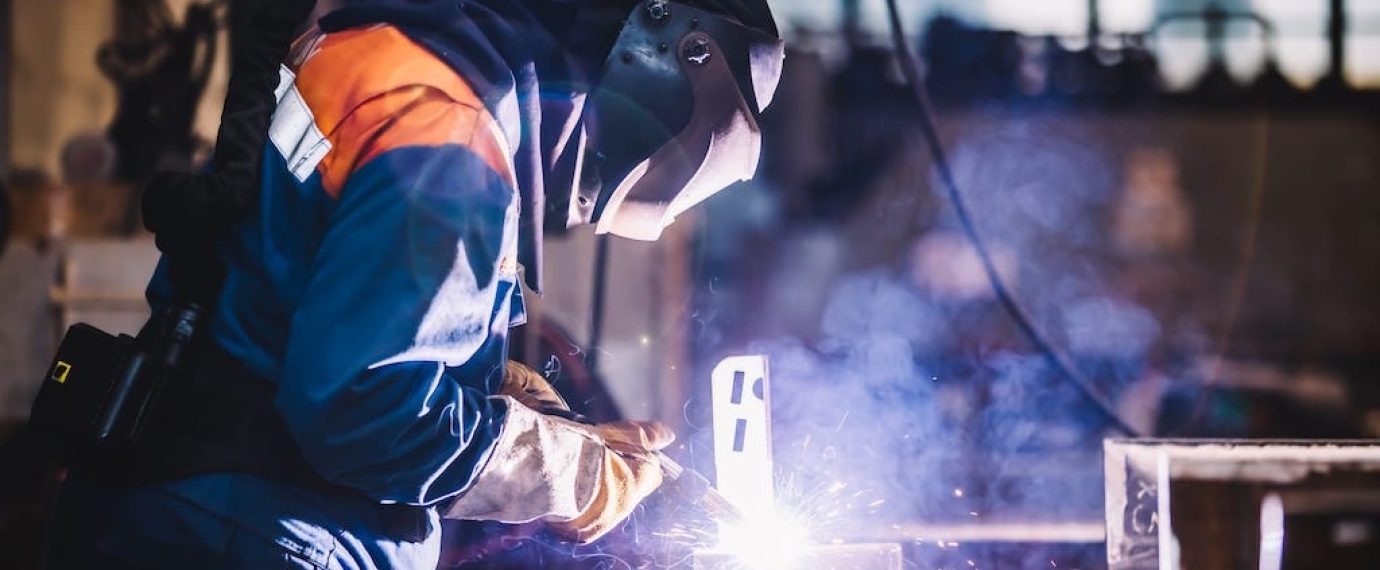What is Industrial Hygiene?
The American Industrial Hygiene Association (AIHA) defines industrial hygiene as “a science and art devoted to the anticipation, recognition, evaluation, control, and confirmation of protection from those environmental factors or stresses arising in or from the workplace which may cause sickness, impaired health and well being, or significant discomfort among workers or among citizens of the community.”

How to Conduct a Site Survey
1. Conduct a Walkthrough Survey
When questioning what type of monitoring or where monitoring is needed in a facility, it is recommended to start with a facility walkthrough. The walkthrough is needed to identify the different areas of the facility, how they are separated, and what processes take place in the different areas. Looking at the roof lines of the facility can help determine what areas would be exposed to similar contaminants based on the materials used or processes performed in those areas.
You also want to take note of anything you hear, see, smell, or touch when completing the walkthrough. Do you notice that certain areas are much noisier than others? Do you notice strong smells of any sort in any area or around a specific process? Do you see anything that is concerning, such as a dust cloud when an employee empties a bag of powdered material into a tank? Do you touch anything like oil mist on the floor as you are walking?
2. Identify Potential Concerns
When looking to identify potential concerns, direct exposure must be assessed. Direct exposure occurs when an employee is exposed to a chemical or material through a process or task. The employee may directly handle the material, or they may be exposed to the material through a process.
With direct exposure, the contamination concern is the same as the material being used. For example, an employee could be exposed to alcohol vapors if they used alcohol to wipe down a product. They could also be exposed to alcohol vapors if they are working adjacent to a mixing tank where large amounts of alcohol are added. Any employee direct exposure should be assessed to determine the need for industrial hygiene monitoring.
Common hazards found in manufacturing environments include:
- Chemical Hazards
- Gases, vapors, dusts, fumes, mists, or smoke
- Physical Hazards
- Noise
3. Study the Relevant Processes
It is also important to access process(es) generating exposure. Process-generated exposure occurs when the process or task creates a different exposure hazard. For example, if an employee is bending a piece of metal with a press brake, there is little risk for any type of exposure. Meanwhile, if an employee is performing welding tasks on that same piece of metal, there could be several potential exposure hazards because of the weld fumes created during the process.
Any task that involves heating/cutting/mixing chemicals or materials should be accessed for process-generated exposure. The Safety Data Sheet (SDS) of the raw material(s) used in the process or task is helpful in determining potential hazards generated with exposure.
4. Conduct Monitoring
Conducting industrial hygiene monitoring is a critical step in controlling any potential hazards and important data to validate the need for mandated programs or the exemption thereof. The results of the monitoring will identify if controls are needed to keep employees safe. Even if there is no expected overexposure to a hazard, conducting baseline testing is still recommended. Baseline testing is the initial testing that identifies the level of hazard that employees are exposed to.
Testing should be completed with calibrated equipment capable of determining the time-weighted average (TWA) exposure. The time-weighted average takes into account the variable exposure through an entire shift, 8-hour workday, and 40-hour week exposure time.
While there is no required frequency for industrial hygiene testing, U.S. Compliance would recommend completing testing every 3-4 years if there are no specific concerns. Other triggers for testing would include facility changes or process changes.
Some hazards, such as lead contamination or chromium (VI) contamination, have specific testing requirements based on employee exposure. Details for specific testing requirements can be found within the OSHA regulation associated with the contaminant.
Common sampling examples include but are not limited to:
- Volatile organic compounds (VOCs)
- Dust (total particulate and respirable particulate)
- Total weld fumes
- Carbon Monoxide
- Crystalline Silica
- Isocyanates
- Oil Mists
- Acids
- Noise
5. Interpret the Results
Once the results from monitoring are received, they will need to be compared to enforceable, applicable, and/or suggested exposure limits.
- Permissible Exposure Level (PEL)
- The TWA concentration for a conventional 8-hour workday and a 40-hour work week, to which it is believed that nearly all workers may be repeatedly exposed, day after day, without adverse effect. As regulated by the Occupational Safety and Health Administration (OSHA).
- Occupational Exposures Limits (OELs) – Suggested exposure limits
- Threshold Limit Value (TLV)
- The TWA concentration for a conventional 8-hour workday and a 40-hour work week, to which it is believed that nearly all workers may be repeatedly exposed, day after day, without adverse effect. As suggested by the American Conference of Governmental Industrial Hygienists (ACGIH).
- Threshold Limit Value (TLV)
- Recommended Exposure Level (REL)
- The TWA concentration for a conventional 8-hour workday and a 40-hour work week, to which it is believed that nearly all workers may be repeatedly exposed, day after day, without adverse effect. As suggested by the National Institute for Occupational Safety and Health (NIOSH).
- Short Term Exposure Limit (STEL)
- The concentration to which it is believed that workers can be exposed continuously for a short period of time without suffering from irritation, chronic or irreversible damage, or narcosis that could lead to injury. The STEL is defined as a 15-minute exposure (and no more than 4 times per day with 60-minute intervals in-between).
If a monitoring result is found to be nearing the exposure limit, no action is required, although the contaminant should be monitored closely to ensure that it remains at a safe level.
If a monitoring result is found to exceed the exposure limit, controls should be implemented to protect the employee. Controls should be implemented following the below hierarchy.

If industrial hygiene monitoring results identify that there is no overexposure to a hazard, it is still a valuable result. The favorable result is documentation that the facility has provided a safe work environment for the employee.
U.S. Compliance can assist with most industrial hygiene sampling. If you need assistance with site surveys or testing, consult U.S. Compliance to maintain a safe facility.



